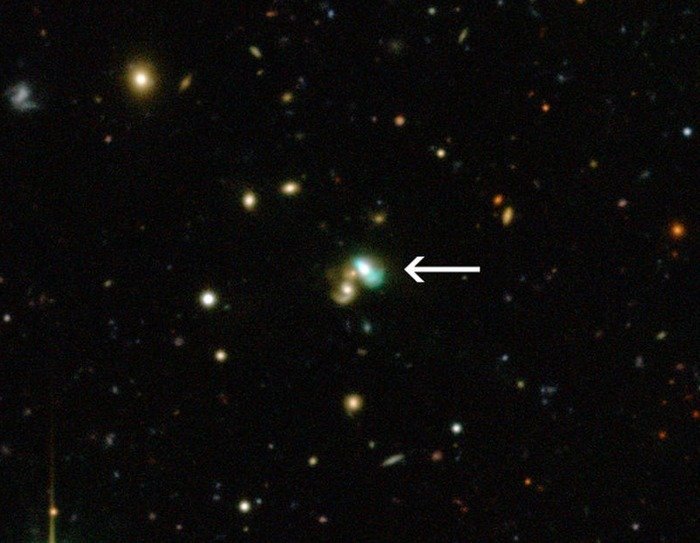A telescope in Hawaii captured this close-up of the sky around a very unusual green object, a bright example of a new class of objects that have been nicknamed green bean galaxies. Credit: CFHT/ESO/M. Schirmer
GARCHING, Germany, Dec. 6 (UPI) -- Astronomers say telescopes in Chile and Hawaii have identified a new class of galaxy dubbed "green bean galaxies" because of their unusual appearance and color.
These galaxies glow green from the intense light emitted from the surroundings of monster black holes at their centers and are among the rarest objects in the universe, the European Southern Observatory reported Wednesday.
While the gas in the center of many galaxies glows from the energy of a black hole, in the case of green bean galaxies the entire galaxy is glowing, not just the center, astronomers said.
The first green bean galaxy observed lies in the constellation Aquarius, and its light has taken about 3.7 billion years to reach Earth, they said.
After the discovery, astronomers searched through a list of nearly a billion other galaxies and identified 16 more with similar properties, confirmed by subsequent telescope observations.
Glowing regions in typical active galaxies are usually small, but in the green bean galaxies the area of ionized gas is as large as the galaxy itself. Ionized oxygen glows bright green, which explains the strange color of these rare cosmic inhabitants, astronomers said.
"These glowing regions are fantastic probes to try to understand the physics of galaxies -- it's like sticking a medical thermometer into a galaxy far, far away," Mischa Schirmer of the Gemini Observatory in Chile said.
"Usually, these regions are neither very large nor very bright, and can only be seen well in nearby galaxies. However, in these newly discovered galaxies they are so huge and bright that they can be observed in great detail, despite their large distances."















